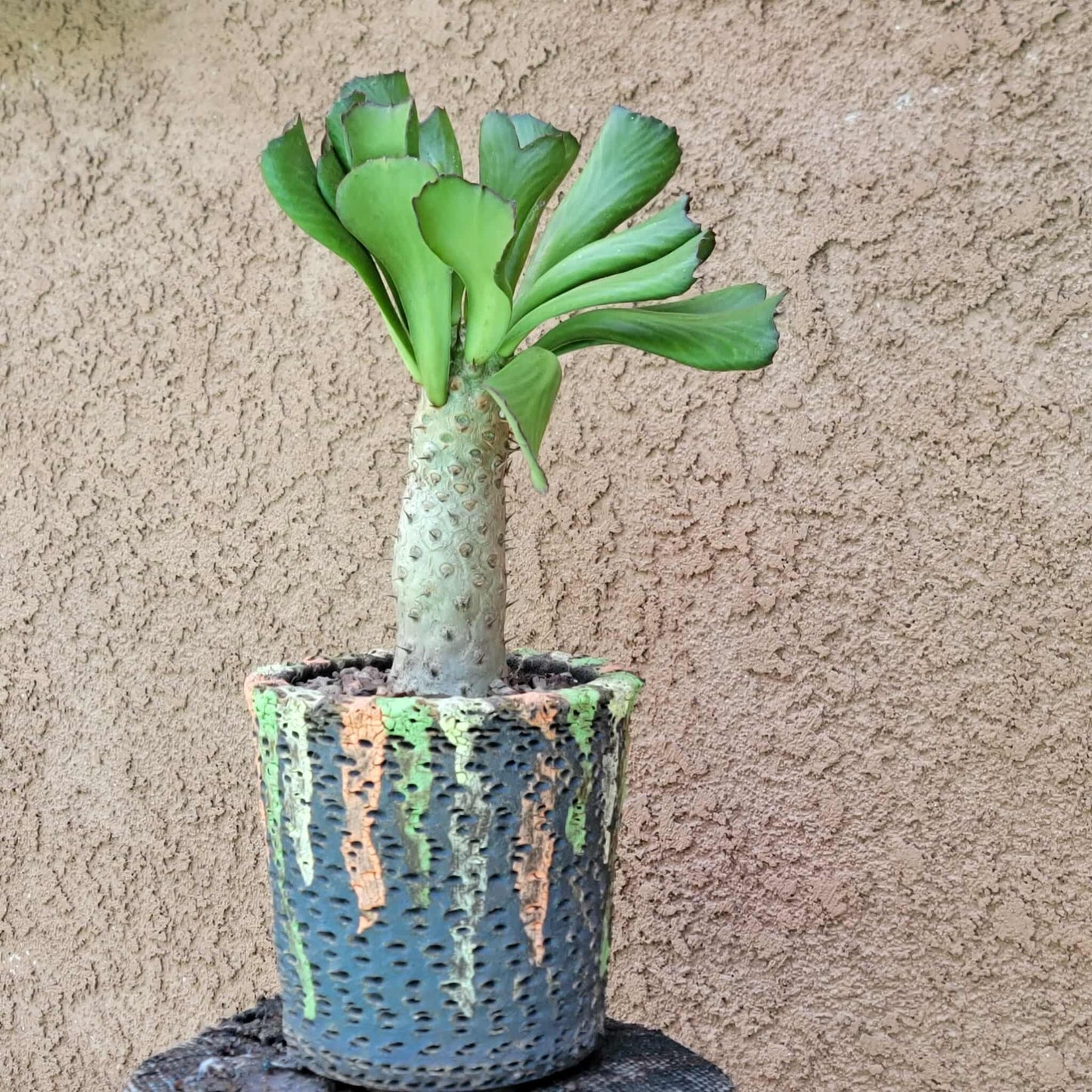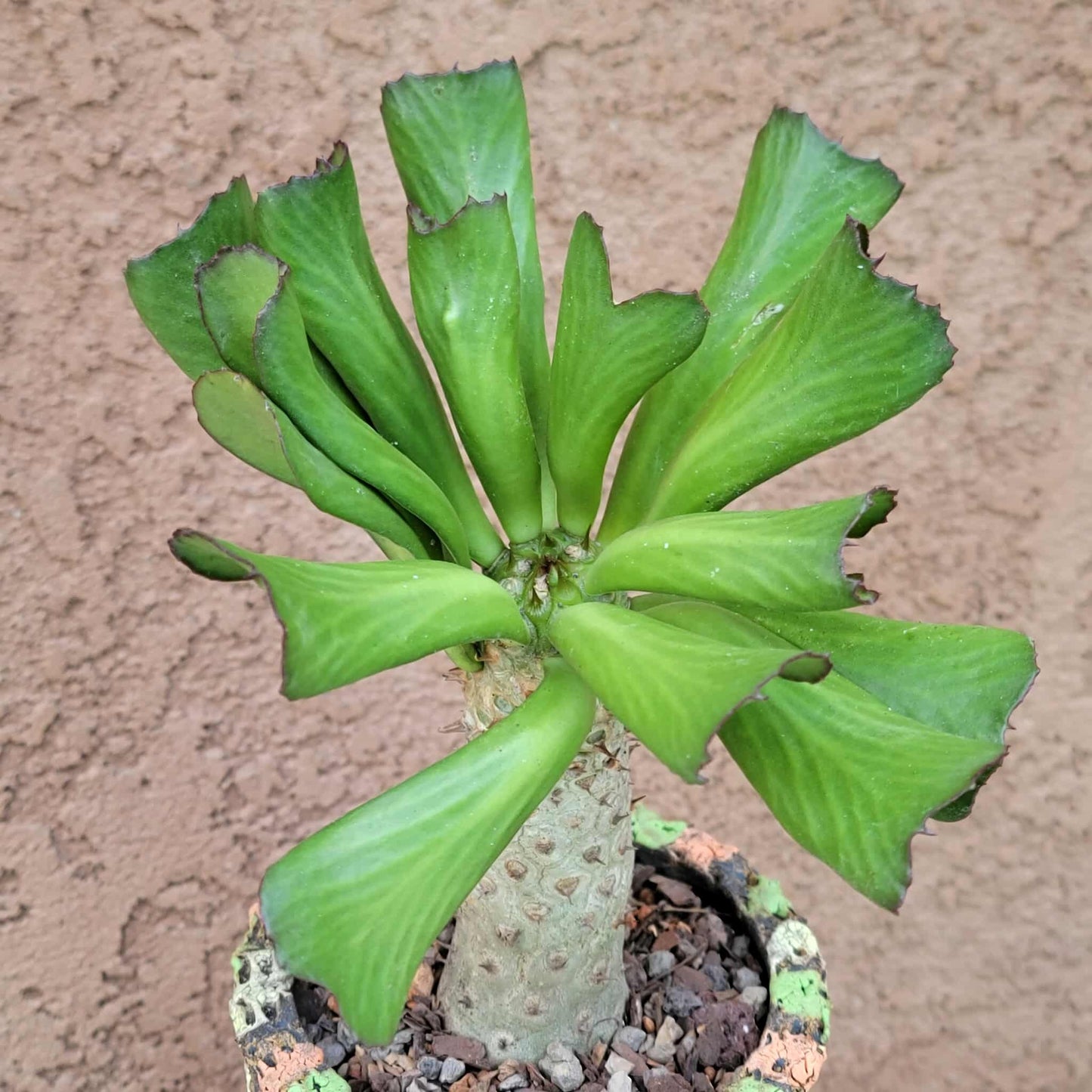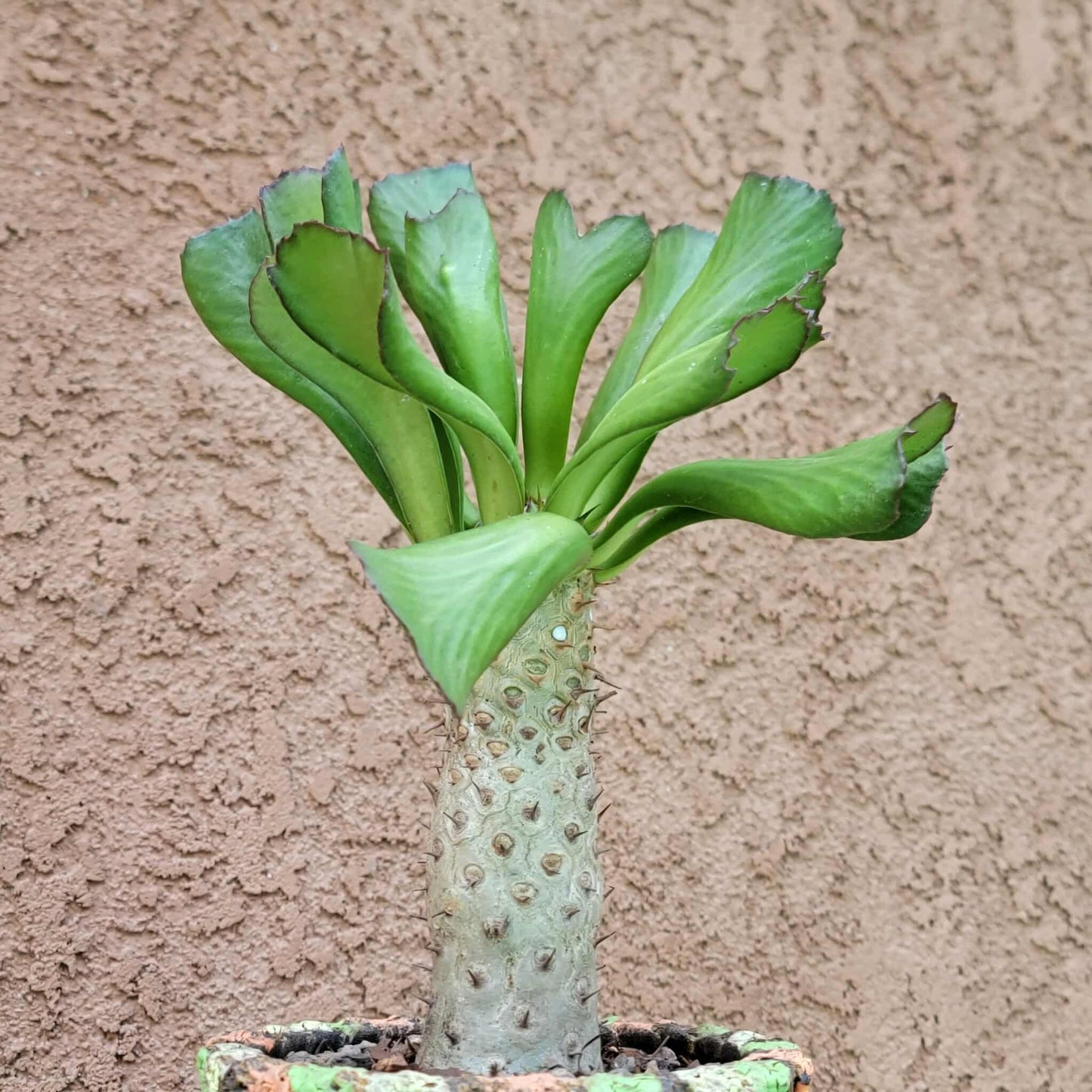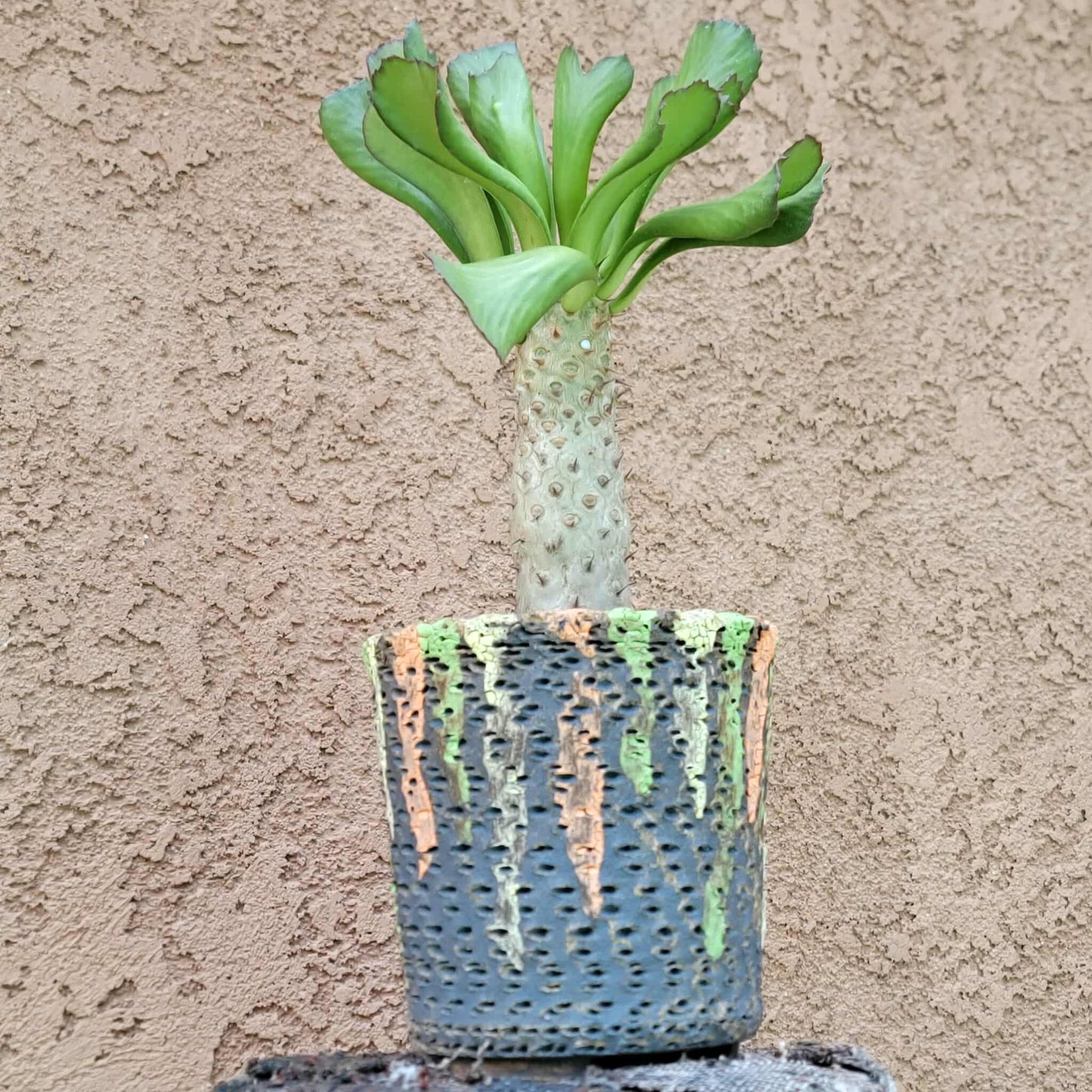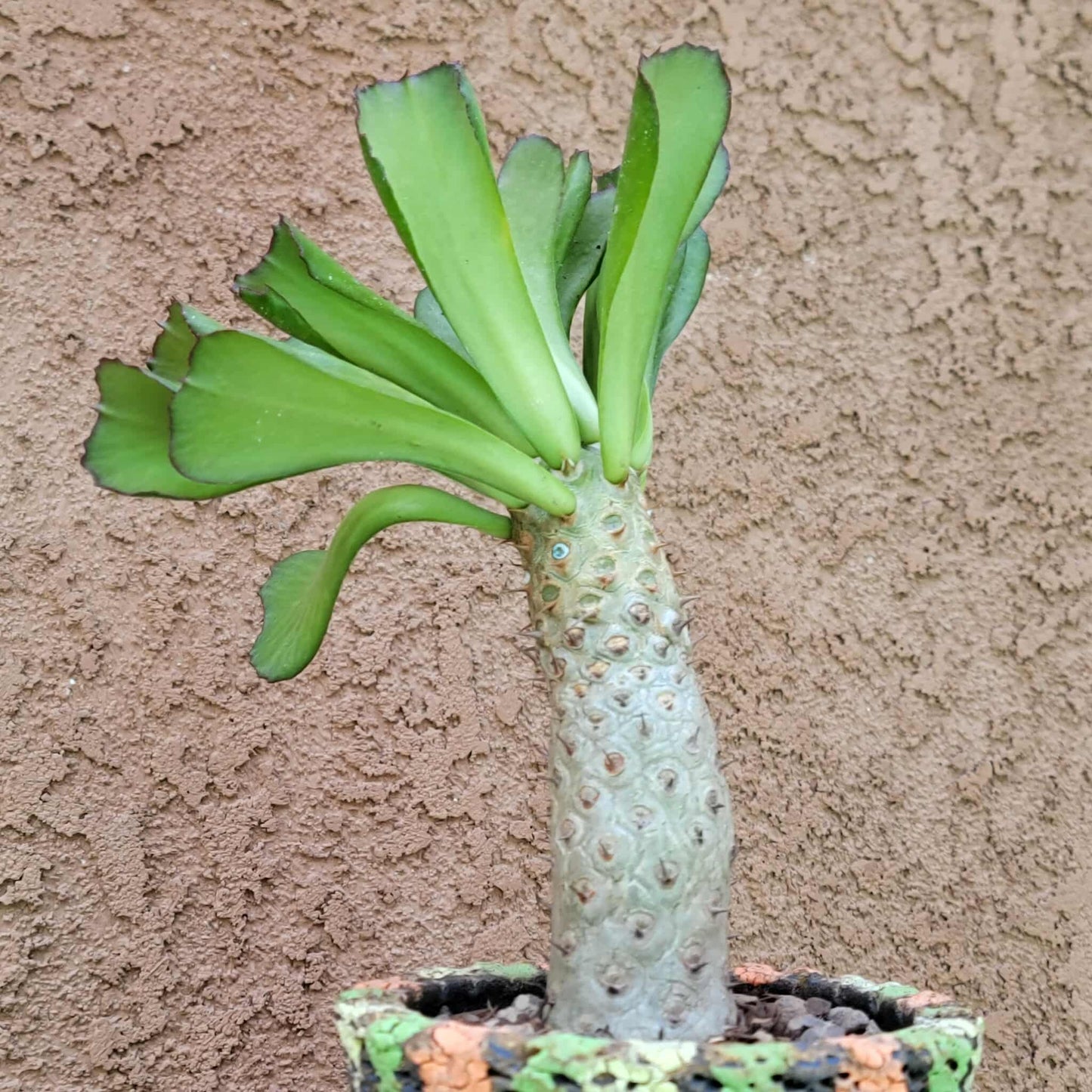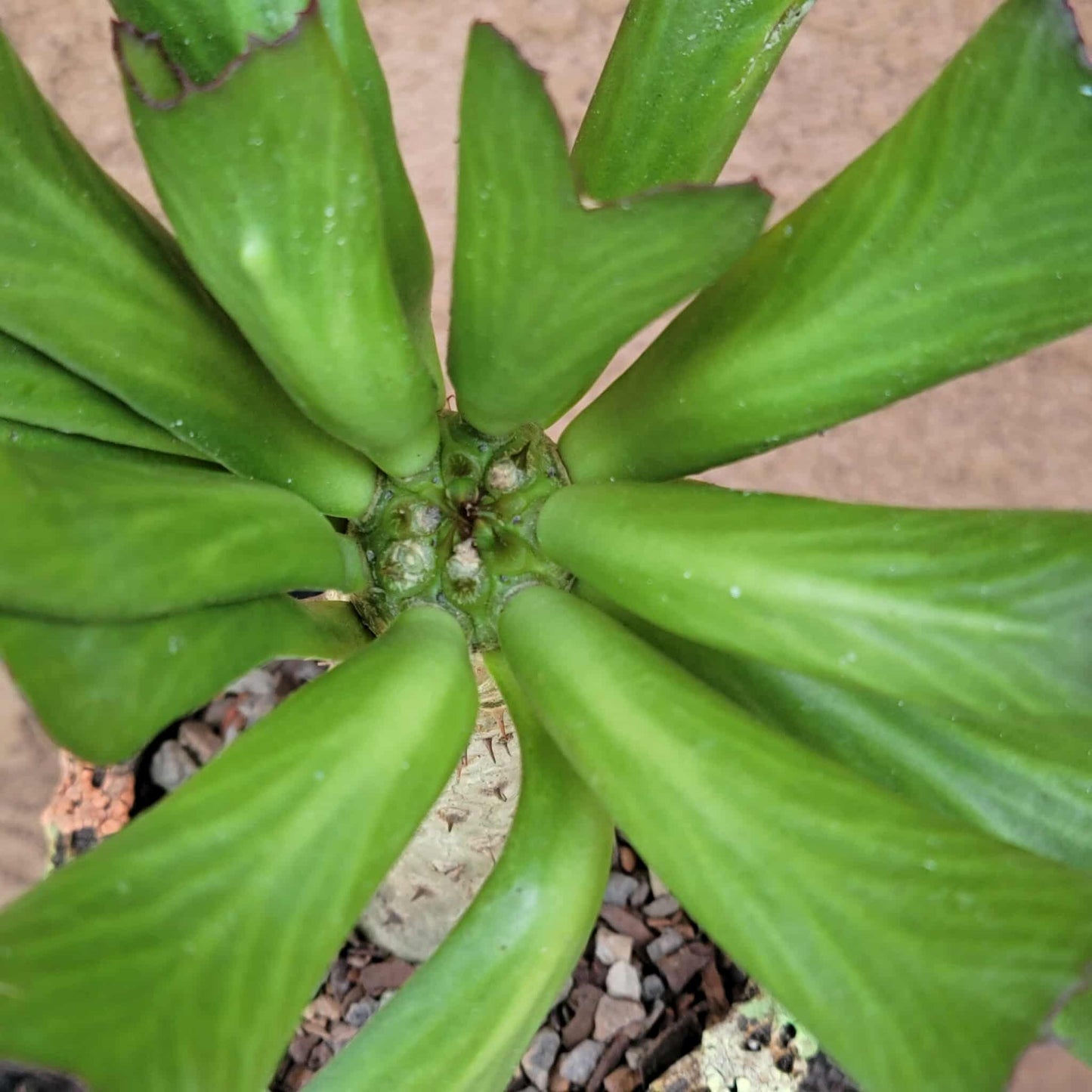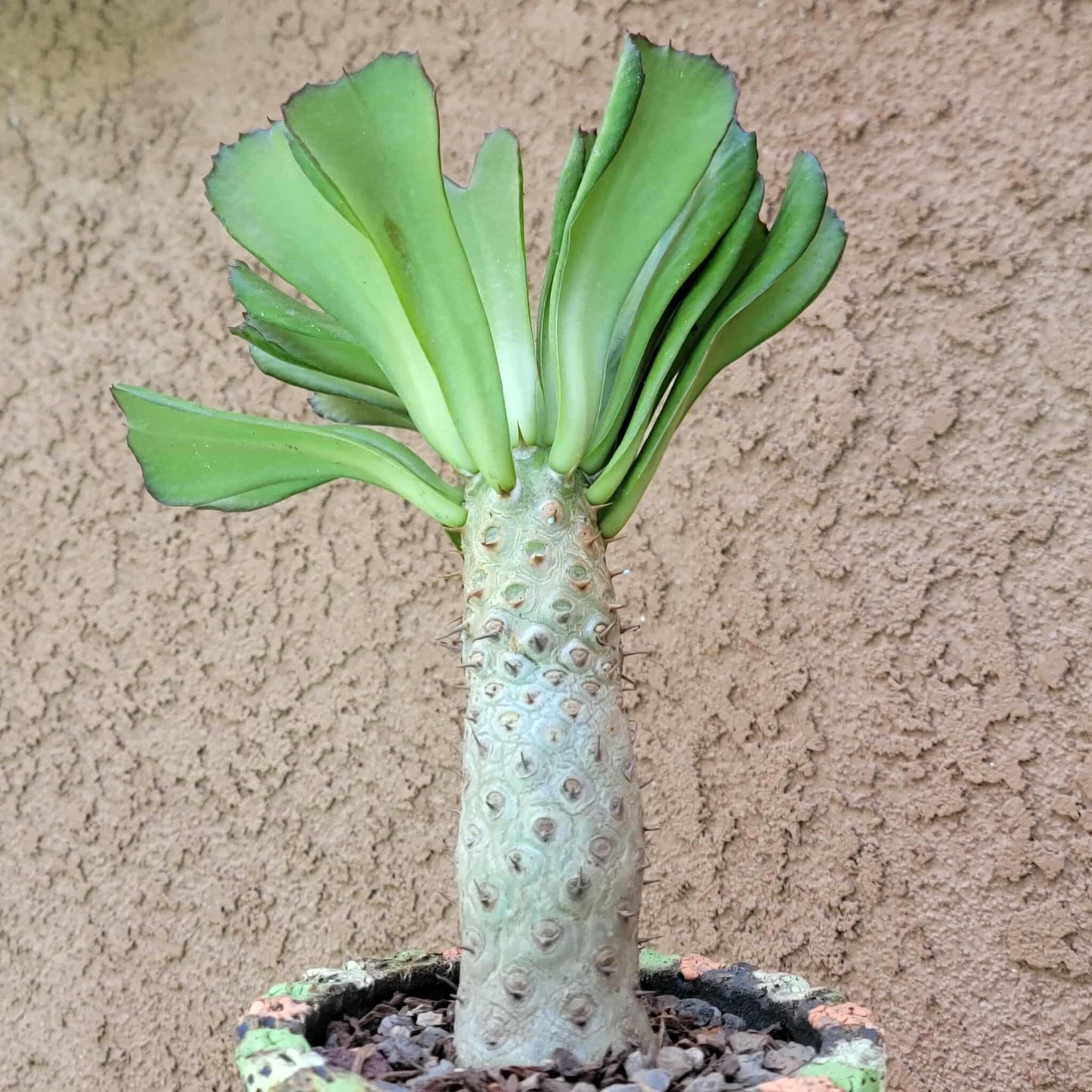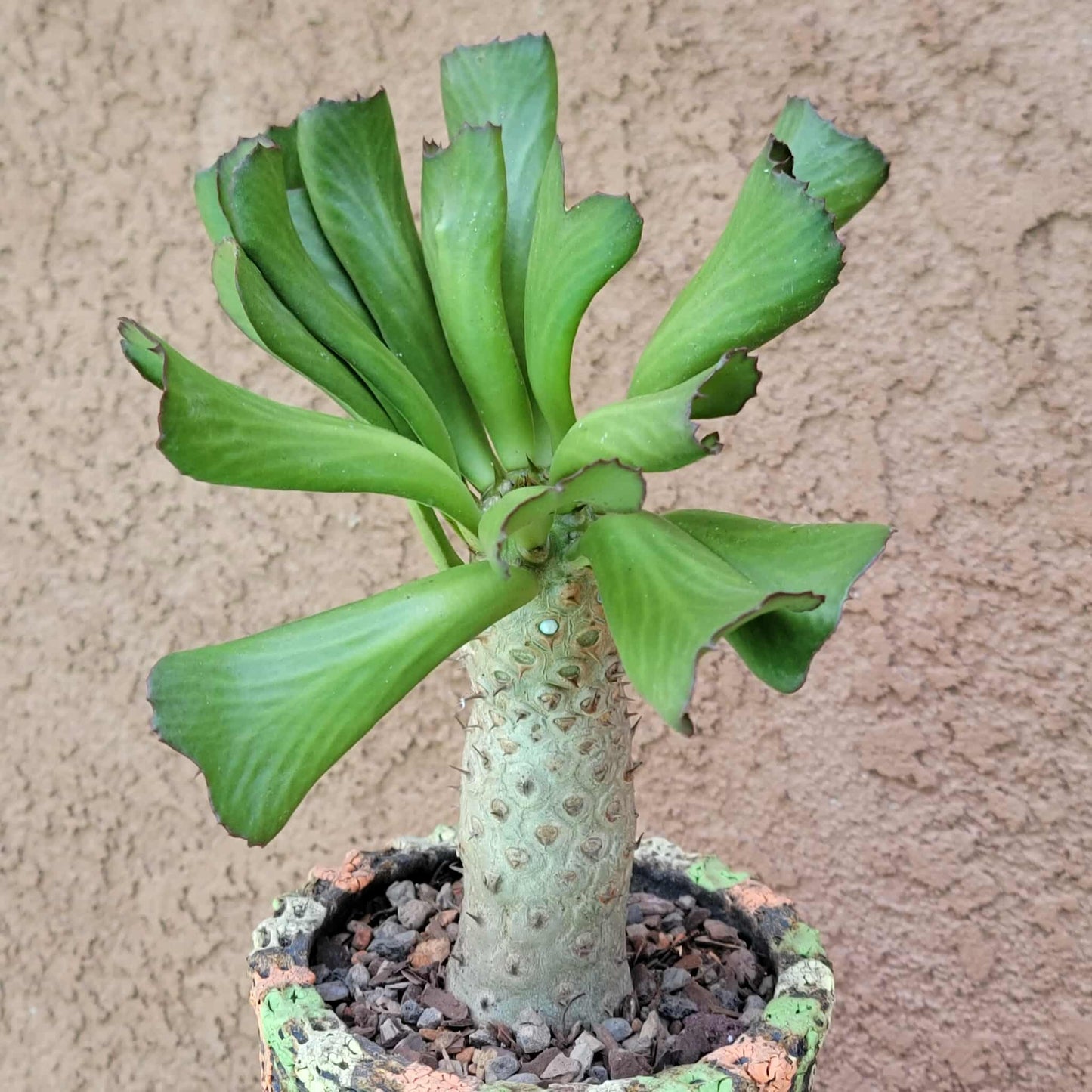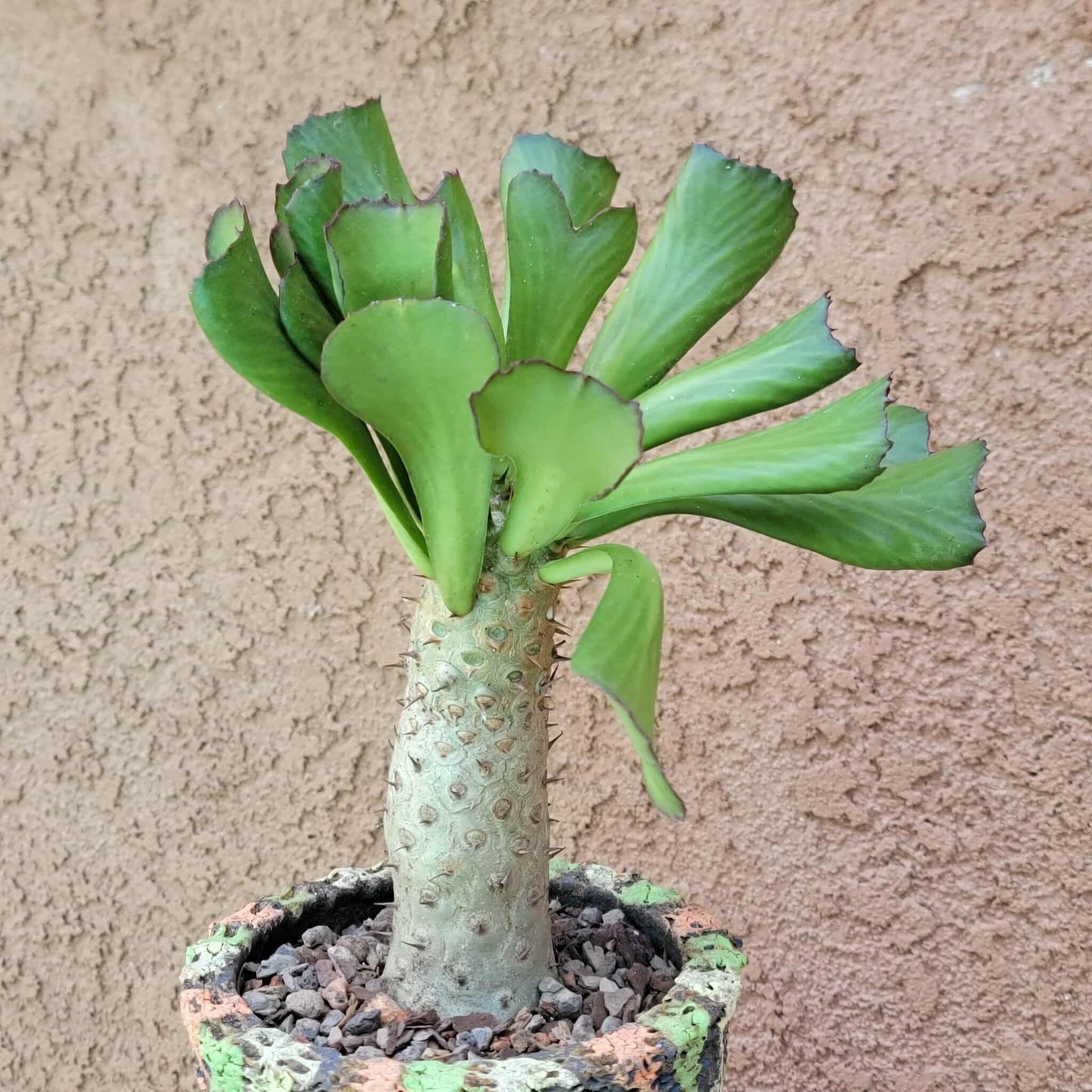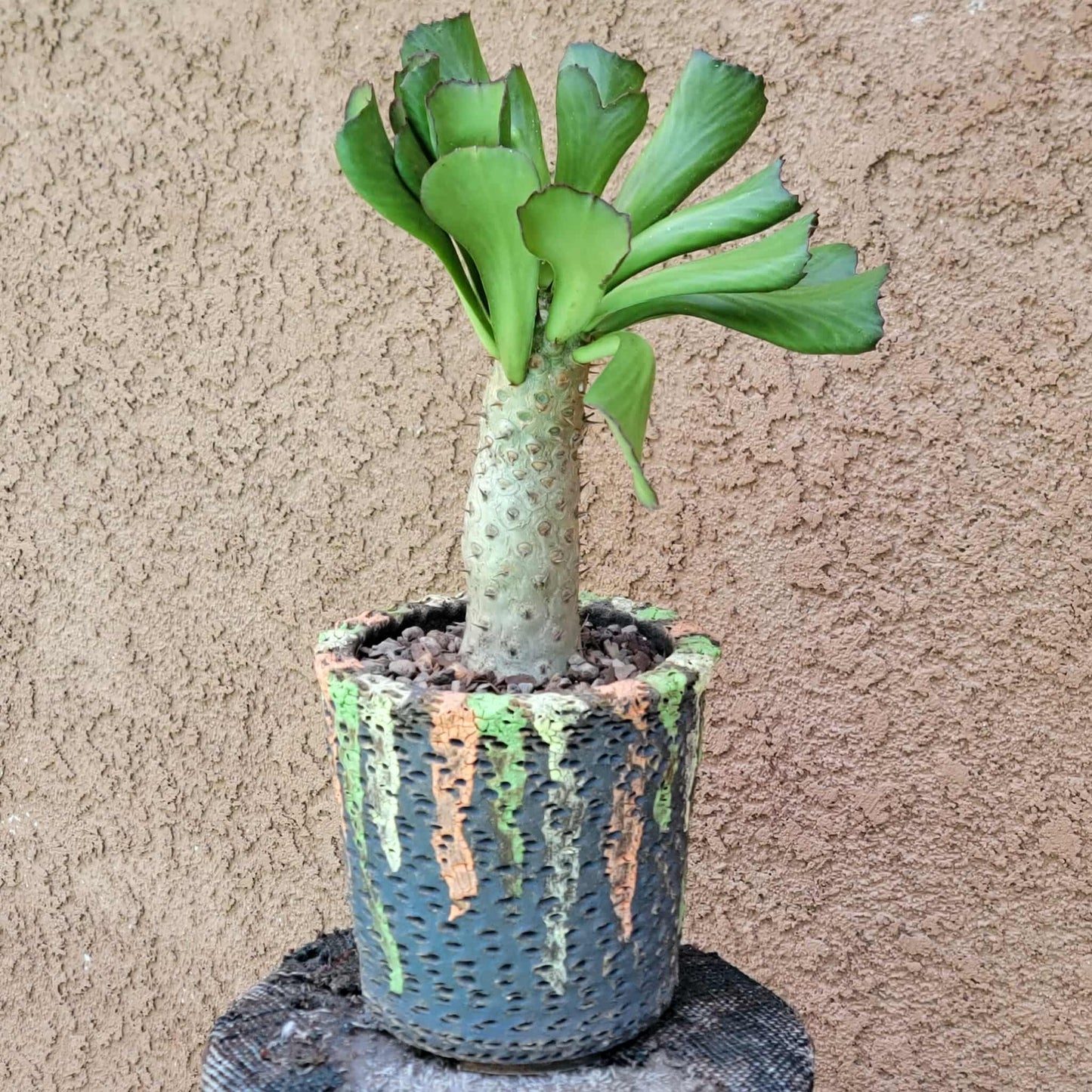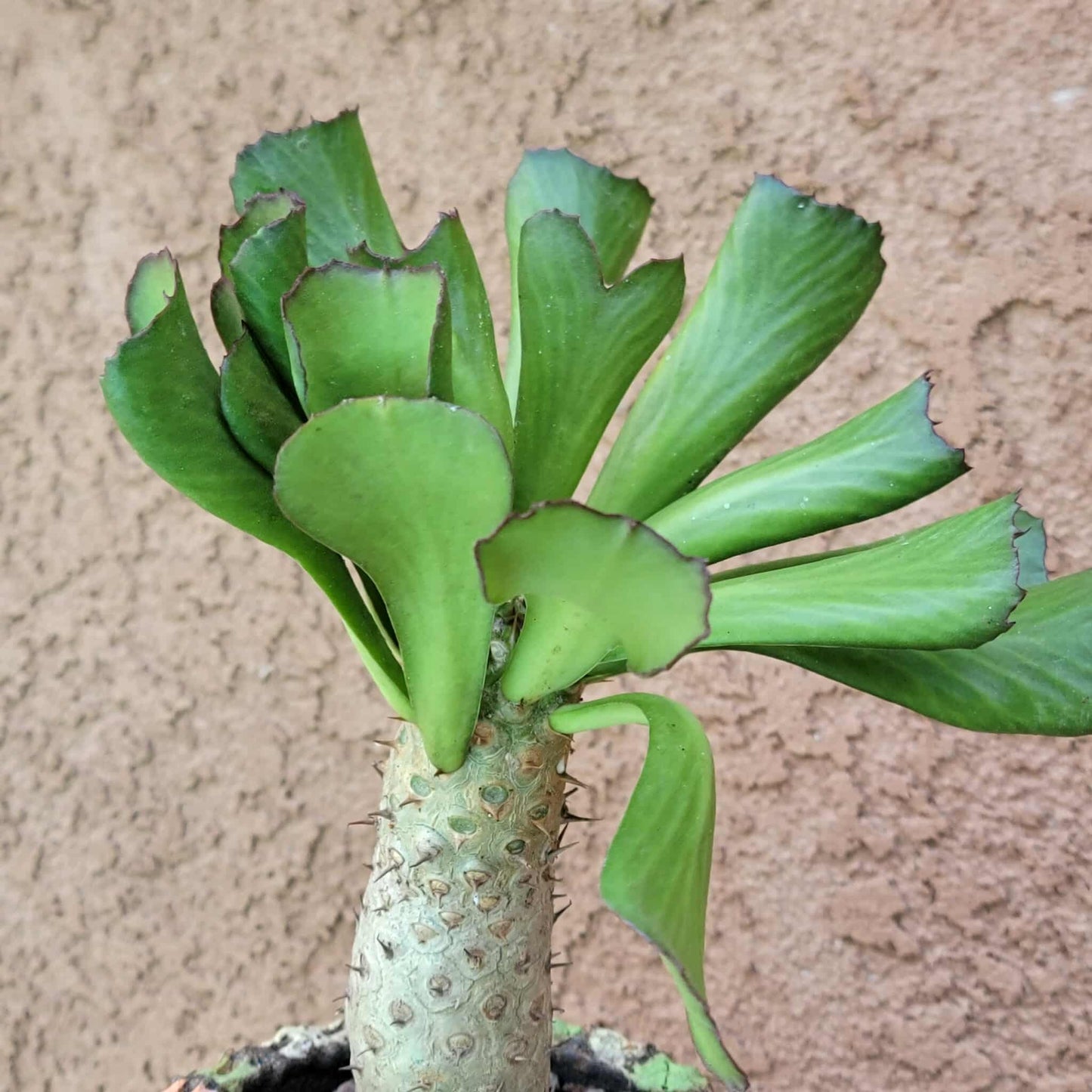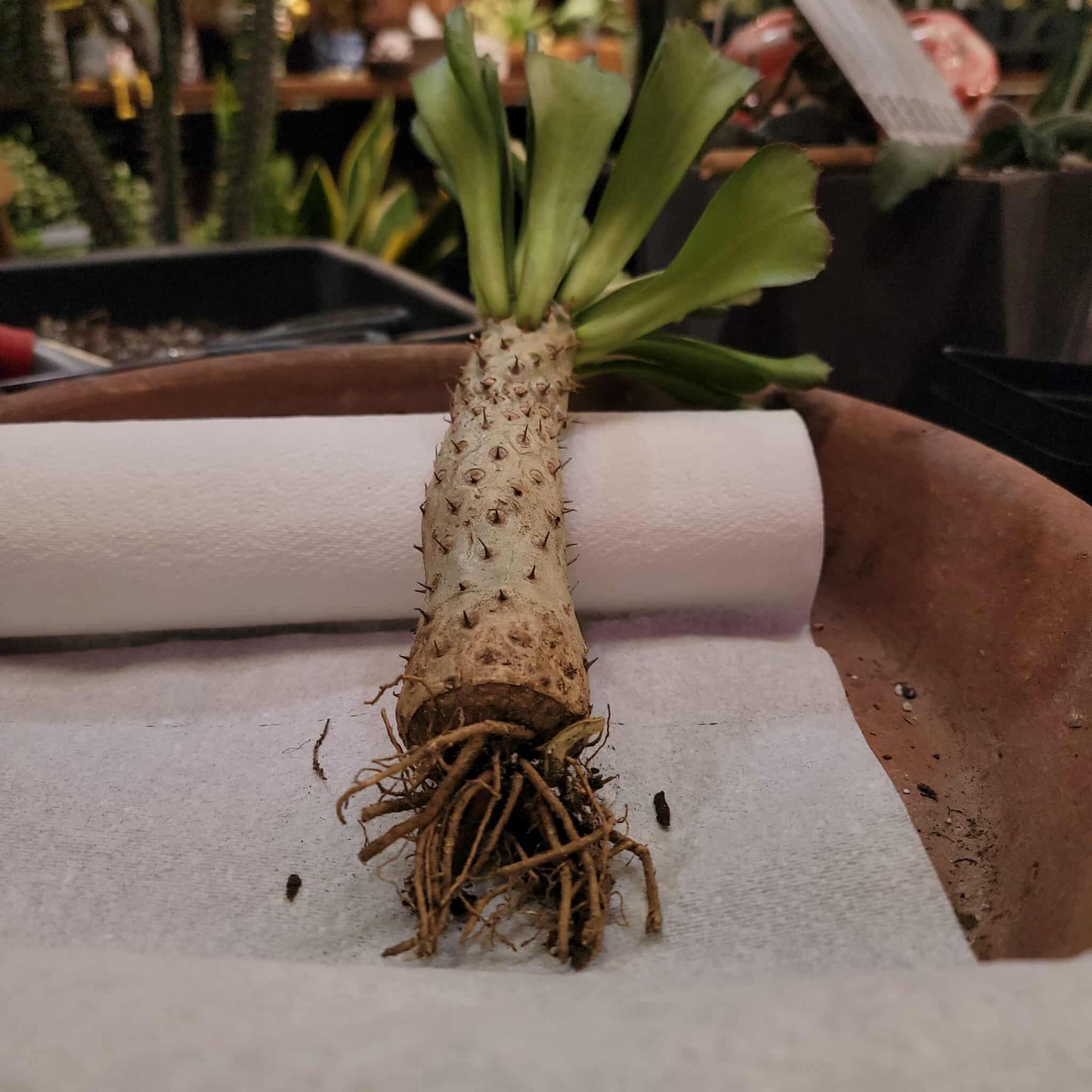Shangri-Ha Cactus Ranch
Euphorbia unispina
Euphorbia unispina
Couldn't load pickup availability
Euphorbia unispina
You will receive this exact rare seed grown specimen.
Measures 8.5" tall above the soil line.
Roots as shown.
Showcased here in one-of-a-kind handmade pottery (sold separately).
Will be shipped bare root.
Euphorbia unispina is a shrubby, cactus-like succulent native to sub-arid savannah regions of central tropical Africa, including Guinea, Mali, Nigeria, and southern Sudan. Named for its solitary spines, its distinctive features include thick, cylindrical branches, terminal rosettes of leaves, and a poisonous milky sap.
Key Characteristics:
· Size: Can grow up to 10 feet tall, with a thick main stem and 3–4 cylindrical branches.
· Stems: Silvery-grey branches are covered with shallow tubercles arranged in spiral lines. Younger branches have distinct tubercles with single spines, while older plants can be spineless.
· Leaves: Fleshy, wedge-shaped, green leaves grow in tufts or rosettes at the tips of the branches. The margins of the leaves are often wine-red and can be frilled. Leaves drop during the dry season.
· Spines: A single, dark grey, cone-shaped spine grows from a horny, shield-like base. The specific name unispina means "single-spined".
· Flowers: Small, yellow-green, cup-shaped flowers (cyathia) appear at the end of the dry season, before new leaves emerge.
Care:
· Soil: Requires well-draining mineral-based potting substrate, such as a mix for cacti and succulents. It is highly susceptible to root rot in waterlogged soil.
· Watering: As a drought-tolerant succulent, it requires infrequent watering. Water deeply in the summer when the top few inches of soil are dry, but allow the soil to dry out completely between waterings. Reduce watering significantly in the winter when the plant is dormant.
· Temperature: This is a cold-sensitive species and is not frost-tolerant. It should be protected from temperatures below 50°F (10°C).
· Fertilizer: Feed sparingly with a diluted, balanced liquid fertilizer during the active growing season in the spring and summer.
· Propagation: Can be propagated by stem cuttings. Cuttings should be allowed to form a callus over a couple of weeks before being planted in soil.
Warnings & Uses:
· Toxicity: All parts of the plant contain a toxic, milky white sap (latex), which is a potent skin and eye irritant. Contact can cause severe burning and swelling. Extreme caution should be used when handling the plant, and protective gloves should be worn.
· Traditional uses: In its native Africa, the caustic latex has been historically used in traditional medicine and as a component of arrow poisons.
· In homes: Due to the toxic sap and sharp spines, this plant is not recommended for homes with small children or pets.
